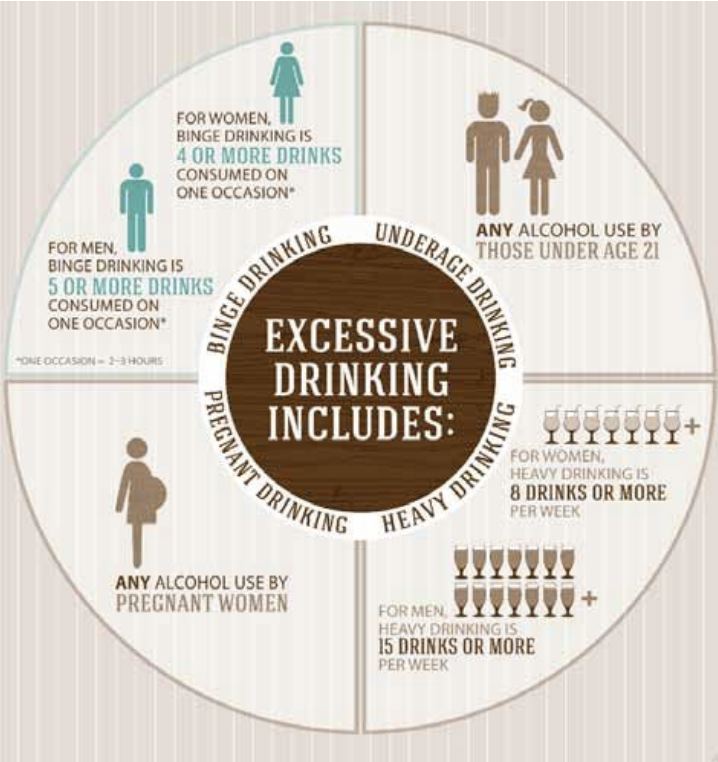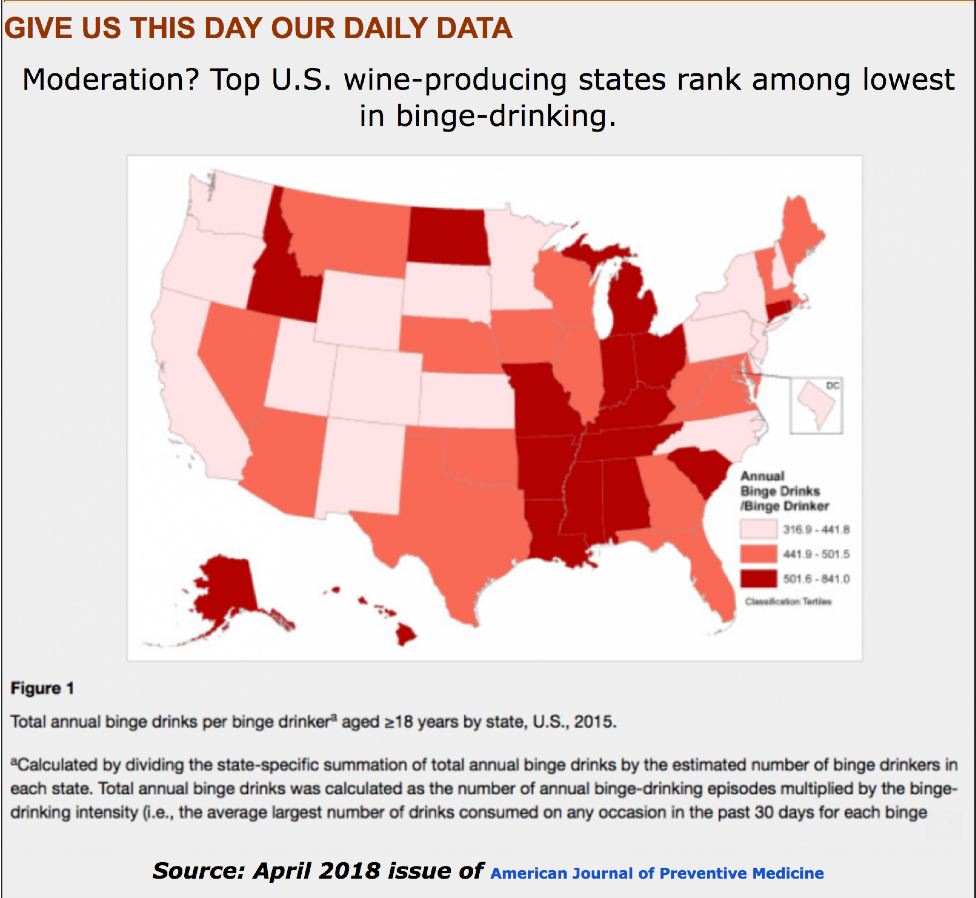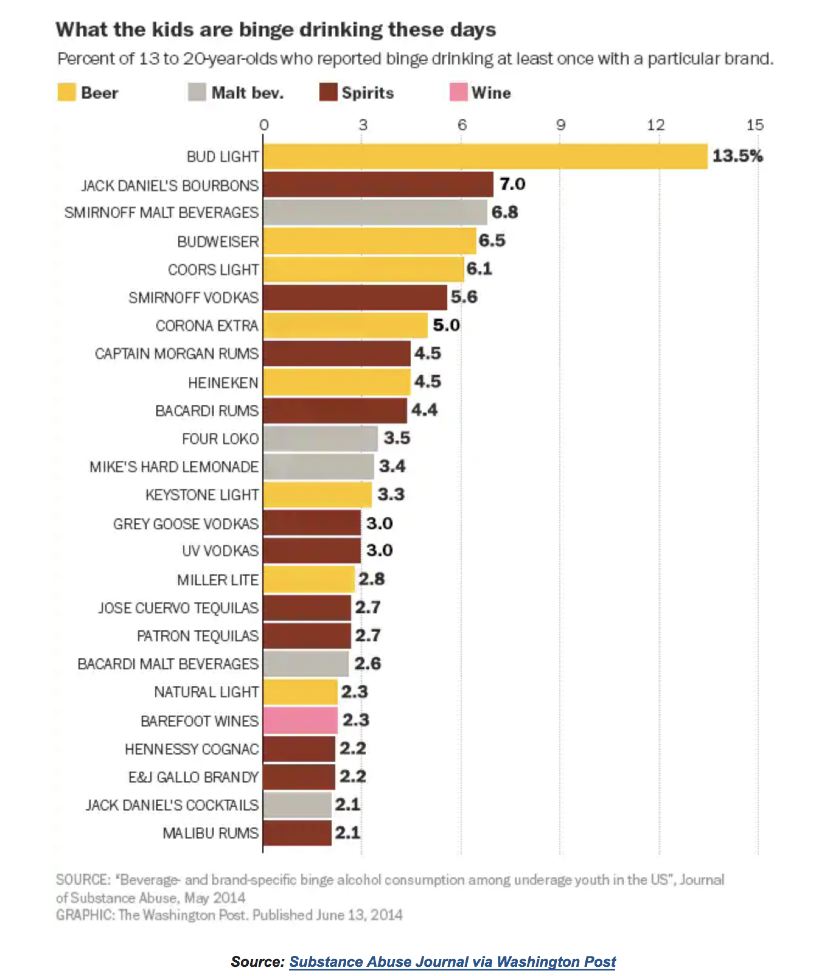Binge Drinking Neutralizes Any Health Benefit of Alcoholic Beverages
“Whether wine is nourishment, medicine or poison, is a matter of dosage.”
Paracelsus, a Middle Age German physician, the Father of Pharmacology
Binge drinking is also referred to as “heavy episodic drinking,” and is defined in several different ways. It is also
interchangeable with the terms “excessive” and “heavy” drinking. The National Institute on Alcohol Abuse and
Alcoholism defines binge drinking as a pattern of drinking that brings blood concentration (BAC) levels to 0.08
g/dL which is also the legal limit for driving in most states. Another accepted definition of binge drinking is
drinking five or more drinks for men and four for women on the same occasion on at least one day in the past
30 days. A variation of this definition is the consumption of five or more drinks by men and four or more drinks
by women in a two-hour span. Regardless of how you define binge drinking, it is clearly hazardous to
your health.

At least part of the motivation to binge drink is thought to be the release of dopamine in the brain by alcohol.
This neurotransmitter produces rewarding pleasurable effects and motivates the drinker to binge over and over.
The following are considered by the medical community to be generally accepted truths:
1. Binge drinking is not healthy at any age.
2. Binge drinking is particularly risky for high school and college-age girls in whom this activity can
lead to an increased risk of breast cancer in later life.
3. Any health benefits from light-to-moderate alcohol intake disappear with regular binge drinking.
The frequency of binge drinking varies by states in the U.S. and is lowest in the wine-producing states. This
report was published in the April 2018 issue of the American Journal of Preventive Medicine.
Young people rarely binge drink wine, presumably because of the cost. A 2014 report in the Journal of
Substance Abuse revealed what 13 to 20-year-olds are binge drinking:
A paper in the Journal of Neuroscience published in July 2018 by Columbia University scientists looked at how
binge drinking alters the activity of the neurons in the prefrontal cortex, the part of the brain where short-term
and working memories are located. Mice who chose to binge drink dampened the activity of neurons in this
region of the brain. 90 percent of teen drinking is binge drinking and this is unfortunate since the prefrontal
cortex is not entirely functional until the 20s and could lead to long-term memory issues with aging.
New research published in the American Journal of Preventive Medicine in April 2018 revealed that U.S. adults
consume 17.5 billion binge drinks per year. This study, conducted by researchers at the CDC, found that one in
six Americans drinks about once a week at an average of about seven drinks per binging session. Binge
drinking is most common among young adults between the ages of 18 and 34, but more than half of all binge
drinks consumed were by adults over age 35 (the biggest bingers).
29 cohorts of U.S. young adults were studied in a report published in Alcoholism: Clinical & Experimental
Research in January 2019. The age of peak binge drinking prevalence increased across cohorts from age 20 in
1976 to 1985 to 22 in 1996-2004 for women, and from 21 in 1976-1985 to 23 in 1996-2004 for men. Women in
the more recent cohort group ages 21 to 30 reported significantly higher binge drinking prevalence than women
in earlier cohorts. Men in the more recent cohort group reported higher binge drinking prevalence at ages 25 to
26. The conclusion was that an older age of peak binge drinking and a decreased rate of decline in the
prevalence of binge drinking in later young adulthood among more recent cohorts have resulted in an
extension of individual and societal risk associated with binge drinking, particularly for women, across young
adulthood.
France’s agriculture minister Didier Guillaume made a controversial statement in January 2019, claiming that
wine is different from other alcohol and rarely causes binge drinking. The Local reported that Guillaume told BFM television, “I don’t
think wine is comparable to other alcohols…alcohol addiction is a real problem..l.but I’ve never seen…a
youngster leaving a nightclub drunk because they drank Cotes-du-Rhone.” He blamed binge drinking on spirits
and mixers. His comments were slammed by Michel Reynaud, head of France’s Addiction Action Fund,
Bernard Basset, Vice President of the National Association for the Prevention of Alcoholism and Addiction said,
“I believe there is a little truth in his inappropriate remarks in that most binge drinking occurs with beer and
spirits (particular shots), particularly in young people while wine drinkers tend to be older and more
responsible.” This comment is supported by the 2014 graphic shown above, “What Kids are Binge Drinking
These Days.”





